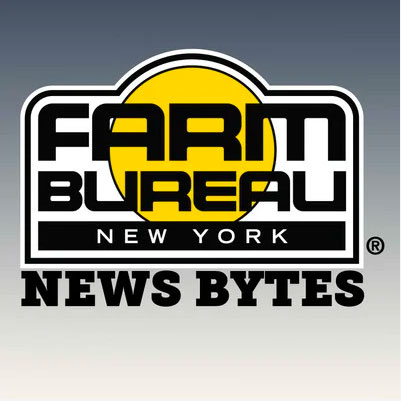Spring Starts with Many Challenges, Uncertainties for New York Growers
Spring Starts with Many Challenges, Uncertainties for NY Growers
NYFB Assistant Director of Public Affairs
The 2022 planting season is off the to a challenging start for growers in New York State and around the country as fertilizer prices have skyrocketed and supply chain issues are preventing major delays various gardening supplies across many sectors of the industry.
Bill Zalakar, President of Long Island Farm Bureau, says business if off to a tough start at Kurt Weiss Greenhouse where he’s worked for 27 years. Kurt Weiss’ main crops are holiday flowering crops such as poinsettias, Easter lilies, mums, hydrangeas and small spring plants used for landscaping.
“At the rate of inflation, I’m worried about people’s spending capabilities and what they’re going to be able to spend. Along with that you have the complications of the supply chain issues which, for us, have been horrendous. We cater to a lot of the large distributers like Home Depot, Costco, Wal-Mart and the big food chain stores. With that a lot of those plans and contracts were drummed up a year ago and even though we placed the orders for supplies come from American suppliers as well as suppliers out of the country and it’s been a disaster trying to get the supplies on time.”
As greenhouse manager, Zalakar says there are plastics used for his plants such as containers and films to cover the greenhouse that have been on backorder for months and that he’s ordering plastics to be received two years from now. The biggest problem with this delay is that large distributers want to put pricing and SKU/UPC numbers on containers, but with prices changing so quickly, that creates a major problem as price change from year to year making last years containers unusable for this year.
American Farm Bureau Federation Chief Economist Dr. Roger Cryan says supply chain problems abound in America and around the world. He says the issues began when COVID-19 shut down dining and entertainment and changed consumer spending habits.
“All our demand shifted to stuff and that demand for a lot of stuff clogged up ocean shipping, which we're still dealing with. That's created problems at the ports, shortages of containers, and our ag exporters have had a hard time moving product back across to Asia, and our farmers have had hard time getting inputs,” he said in a recent interview on AFBF’s Newsline podcast.
Sarah Dressel, is a fourth-generation farmer who works in her family’s 300-acre apple farm in New Paltz where she manages its retail stand, u-pick operation, and all other horticultural responsibilities. She says that her farm will be able to sustain the increase in fertilizer prices this season.
“We had a little bit of surplus from last year, so we were able to reduce how much we were going to order this year. Fortunately, perennials with pretty solid roots don’t need a ton. We’ve done a lot more soil samples this year than in previous years.”
Aside from Apples, Dressel Farm also produces peaches, strawberries and pumpkins. Dressel says cardboard box shipment is taking twice as long as normal and when they do arrive, sometimes it’s partial orders.
“There’s quite a bit of backordering happening for packaging containers and the price is going up as well,” Dressel said.
David Schoonmaker, one of the owners at Saunderskill Farms in Accord, says his family operation is doing well due to all supplies being ordered last fall. Saunderskill Farms grows mostly bedding plants for their farm market and for wholesale, hanging baskets, bedding plants, tomato and pepper transplants and a few perennials.
“We bought fertilizer last fall for $100 more a ton than we paid last year, but since then it’s gone up another $400-$500.”
“Now the only worry is next year,” he said.
According to a recent study released by AFBF, major nutrients used in the production of primary row crops in the U.S., nitrogen, phosphorus and potassium have experienced varying degrees of upward price pressure. Compared to September 2020 prices, ammonia has increased over 210%, liquid nitrogen has increased over 159%, urea is up 155%, and MAP has increased 125%, while DAP is up over 100% and potash has risen above 134%.



